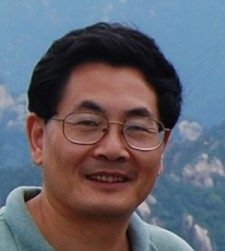Bio
Research
My research interests include numerical modeling, diagnostic,and theoretical studies to understand convection, cloud, radiation and precipitation processes and to improve their representation in general circulation models (GCMs) for predicting future climate. Studying and modeling of cloud systems are motivated by their profound effects on the global circulation, radiation budget and surface temperature, and the need for improved climate models and data for policy makers to determine safe levels of greenhouse gases for the Earth system. Cloud, radiation and precipitation processes are key components of the global water and energy cycle and operate on a wide range of time and space scales. Convection and clouds affect atmospheric temperature, moisture and wind fields through the release of latent heat; the redistributions of heat, moisture and momentum; and the precipitation. Clouds strongly affect the planetary energy budget and surface temperature through the reflection of sunlight, the absorption of infrared radiation from the surface and the emission of radiation to the surface as part of greenhouse effect. Since individual clouds have a spatial scale of less than 10 km that is much smaller than the conventional grid size of several hundred kilometers in climate and weather prediction models, they must be quantitatively formulated in terms of resolved variables in the prognostic equations of temperature, moisture and wind. Deriving such formulations for convection and clouds has been a major challenge for the climate modeling community due to the lack of observations of cloud and microphysical properties. To address this problem, my collaborators at NCAR and I have developed a cloud-resolving model (CRM) which resolves individual clouds but covers a large horizontal domain to generate cloud-scale datasets. The diagnostic and theoretical studies applying the high-resolution datasets generated by the CRM have lead to the improved representation of convection and cloud-radiation interaction in the climate models, and the improved simulations of global climate mean state and variability.
Research Projects
- Wu, X., and X.-Z. Liang (Co-PI), 2002-2006: Application of Seasonal CRM Integrations to Develop Statistics and Improved GCM Parameterization of Subgrid Cloud-Radiation Interactions. DOE/ARM.
- Wu, X., G.J. Zhang (Co-PI), and R.W. Arritt (Co-I), 2004-2008: Evaluating the representation and impact of convective momentum transport in CCSM atmosphere model. DOE/CCPP.
- Wu, X., and Qilong Min (Co-I), 2008-2011: Understanding and Improving CRM and GCM Simulations of Cloud Systems with ARM Observations. DOE/ARM.
- Wu, X., 2009-2012: Effects of Cloud and Radiation Processes on the Global Water and Energy Cycle. NSF.
Teaching
Mteor 341 – Atmospheric Physics I Mteor 342/542 – Atmospheric Physics II
Recent Publications
- Chen, J., Wu, X., Yin, Y., Huang, Q., & Xiao, H. 2017. Characteristics of Cloud Systems over the Tibetan Plateau and East China during Boreal Summer. Journal of Climate.
- Di, L., Sun, Z., Yu, E., Song, J., Tong, D., Huang, H., Wu, X., & Domenico, B. 2016. Coupling of Earth science models and earth observations through OGC interoperability specifications. In Geoscience and Remote Sensing Symposium (IGARSS), 2016 IEEE International (pp. 3602-3605). IEEE.
- Zhang, G. J., Wu, X., Zeng, X., & Mitovski, T. 2016. Estimation of convective entrainment properties from a cloud-resolving model simulation during TWP-ICE. Climate Dynamics, 47(7-8), 2177-2192.
- Chen, J., Wu, X., Yin, Y., & Xiao, H. 2015. Characteristics of heat sources and clouds over eastern China and the Tibetan Plateau in boreal summer. Journal of Climate, 28(18), 7279-7296.
- Li, R., Min, Q., Wu, X., & Fu, Y. 2013. Retrieving latent heating vertical structure from cloud and precipitation profiles—Part II: Deep convective and stratiform rain processes. Journal of Quantitative Spectroscopy and Radiative Transfer, 122, 47-63.
- Min, Q., Li, R., Wu, X., & Fu, Y. 2013. Retrieving latent heating vertical structure from cloud and precipitation Profiles—Part I: Warm rain processes. Journal of Quantitative Spectroscopy and Radiative Transfer, 122, 31-46.
- Wu, X., & Deng, L. 2013. Comparison of moist static energy and budget between the GCM-simulated Madden–Julian oscillation and observations over the Indian Ocean and western Pacific. Journal of Climate, 26(14), 4981-4993.

